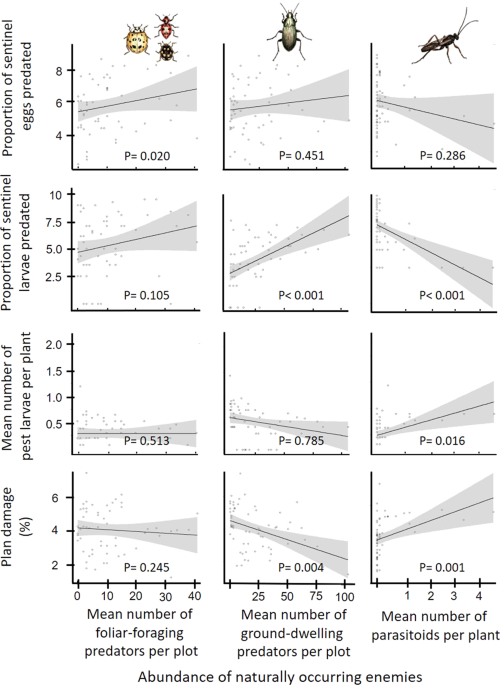Some Known Facts About Eco Bed Bug Exterminators Dc.
Table of ContentsWhat Does Eco Bed Bug Exterminators Dc Do?Eco Bed Bug Exterminators Dc Things To Know Before You Get ThisEverything about Eco Bed Bug Exterminators DcHow Eco Bed Bug Exterminators Dc can Save You Time, Stress, and Money.Excitement About Eco Bed Bug Exterminators Dc
Because pesticides are toxic, they are also potentially hazardous to people, animals, other organisms, and the environment. People who use pesticides or consistently come in call with them have to recognize the loved one toxicity, potential health effects, and preventative steps to decrease direct exposure to the products they utilize. Hazard, or risk, of using chemicals is the potential for injury, or the level of danger associated with making use of a pesticide under a provided collection of problems.
Applicators can reduce or almost eliminate direct exposure-- and therefore reduce hazard-- by adhering to the tag instructions, using personal protective clothing and equipment (PPE), and dealing with the chemical appropriately. For example, more than 95 percent of all pesticide exposures come from facial direct exposure, largely to the hands and forearms. By wearing a pair of unlined, chemical-resistant gloves, this type of direct exposure can be nearly removed.
The unsafe effects that take place from a single direct exposure by any type of path of access are called "intense effects." The 4 courses of direct exposure are facial (skin), inhalation (lungs), dental (mouth), and the eyes. Acute toxicity is identified by checking out the dermal toxicity, inhalation poisoning, and oral toxicity of guinea pig.
9 Simple Techniques For Eco Bed Bug Exterminators Dc
Acute poisoning is gauged as the quantity or focus of a toxicant-- the a.i.-- called for to eliminate half of the pets in an examination populace. This action is normally shared as the LD50 (deadly dosage 50) or the LC50 (lethal concentration 50). Furthermore, the LD50 and LC50 values are based upon a single dose and are videotaped in milligrams of pesticide per kilogram of body weight (mg/kg) of the test animal or partly per million (ppm).
The lower the LD50 or LC50 worth of a pesticide product, the greater its poisoning to human beings and animals. Pesticides with a high LD50 are the least harmful to human beings if used according to the instructions on the item label. The chronic poisoning of a pesticide is identified by subjecting examination pets to long-lasting direct exposure to the energetic component.
The chronic toxicity of a chemical is harder than severe poisoning to determine via lab evaluation. Products are classified on the basis of their loved one intense toxicity (their LD50 or LC50 values). Pesticides that are categorized as highly poisonous (Toxicity Classification I) on the basis of either dental, facial, or breathing poisoning must have the signal words DANGER and POISON published in red with a head and crossbones icon prominently displayed on the front panel of the plan label.
The acute (solitary dosage) dental LD50 for chemical items in this group varies from a trace quantity to 50 mg/kg. For instance, direct exposure of a couple of drops of a material taken by mouth can be fatal to a 150-pound individual. Some pesticide products have just the signal word risk, which tells you absolutely nothing concerning the severe poisoning, just that the product can trigger severe eye damage or severe skin irritation
Some Known Facts About Eco Bed Bug Exterminators Dc.
In this group, the intense dental LD50 ranges from 50 to 500 mg/kg. A teaspoon to an ounce of this product can be deadly to a 150-pound individual (exterminator). Chemical products identified as either slightly poisonous or relatively harmless (Poisoning Classifications III and IV) are required to have the signal word care on the pesticide label

All pesticide toxicity chemical, including the Consisting of, can be found on discovered product's Item Safety Product Safety and security (MSDS). Chemical labels and MSDS can be gotten from merchants or produces - https://filesharingtalk.com/members/593903-ecobedbug3xt. The symptoms of chemical poisoning can vary from a light skin inflammation to coma or even death.
Individuals additionally differ in their level of sensitivity to different degrees of these chemicals. Some people might show no response to a direct exposure that might cause severe ailment in others (bed bug exterminator). Due to potential health and wellness issues, pesticide customers and handlers have to acknowledge the common symptoms and signs of pesticide poisoning. The results, or signs, of pesticide poisoning can be broadly defined as either topical or systemic.
The Main Principles Of Eco Bed Bug Exterminators Dc
Dermatitis, or swelling of the skin, is accepted as the most typically reported topical effect related to pesticide exposure. Symptoms of dermatitis range from reddening of the skin to rashes and/or blisters. Some people have a tendency to cough, hiss, or sneeze when exposed to pesticide sprays. Some individuals respond to important link the strong odor and annoying effects of oil extracts utilized as providers in pesticide items.
This sign typically subsides within a couple of mins after a person is gotten rid of from the direct exposure to the irritant. A response to a pesticide item that causes a person not only to sneeze and cough yet likewise to develop extreme acute respiratory system signs and symptoms is much more most likely to be a true hypersensitivity or sensitive reaction.
Systemic effects are fairly different from topical impacts. They often happen away from the original factor of call as an outcome of the pesticide being soaked up into and dispersed throughout the body.